Quantitative Methods Assignment 3 - Probability Distributions Analysis
VerifiedAdded on 2020/03/16
|10
|699
|175
Homework Assignment
AI Summary
This document presents a comprehensive solution to a Quantitative Methods assignment. The assignment addresses several key concepts in statistics and probability, including the Poisson and binomial distributions. The solution includes detailed explanations and calculations for each question, such as determining the probability of observing a certain number of weed seeds (Poisson distribution), analyzing SGR values using normal and binomial distributions, and calculating conditional probabilities related to ball bearing production. The document also evaluates the suitability of approximations, like using a normal distribution for a binomial distribution. The solution includes practical applications, like decision rules in a business context. The solution also covers the application of Z-tables to calculate probabilities within given diameter ranges and the use of contingency tables to compute conditional probabilities.
1 out of 10
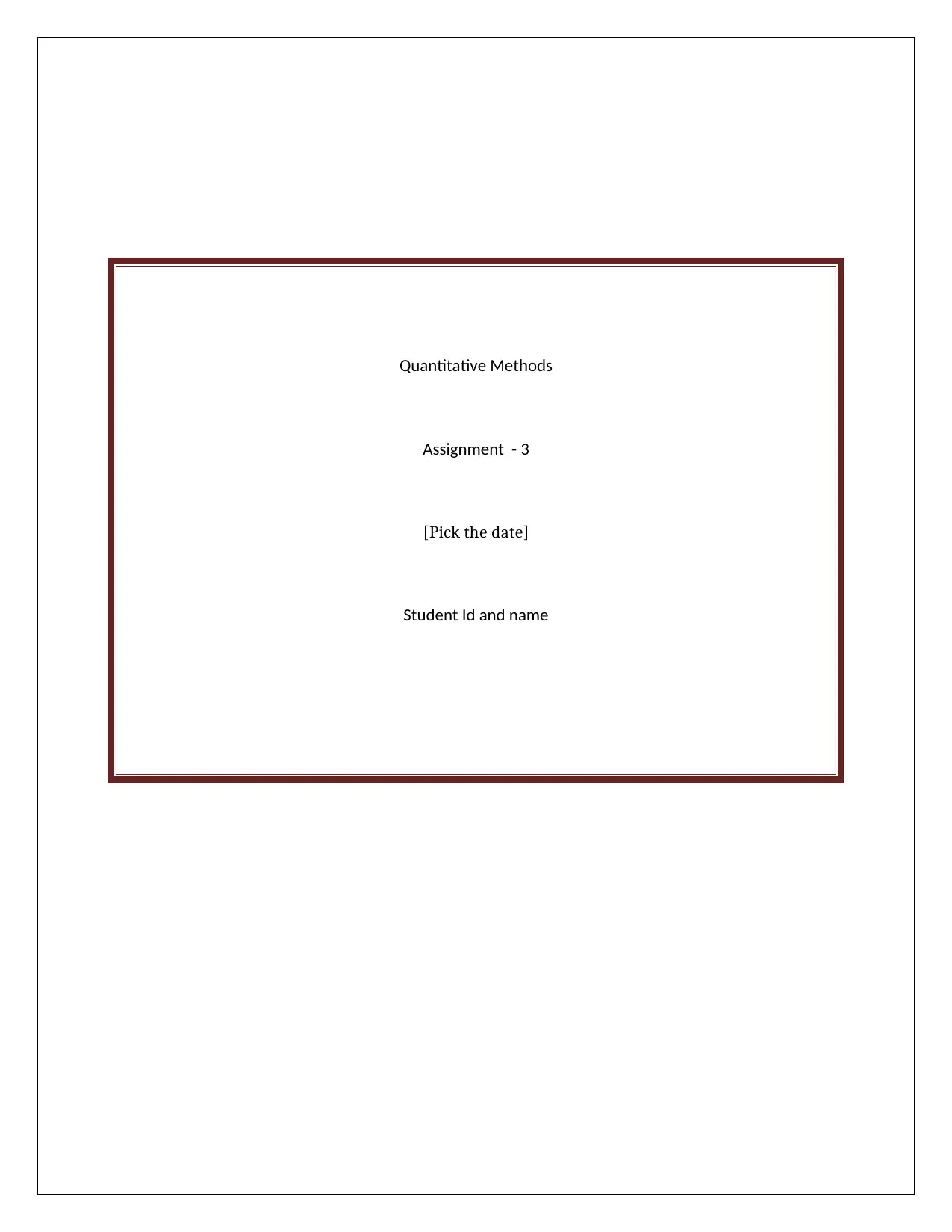
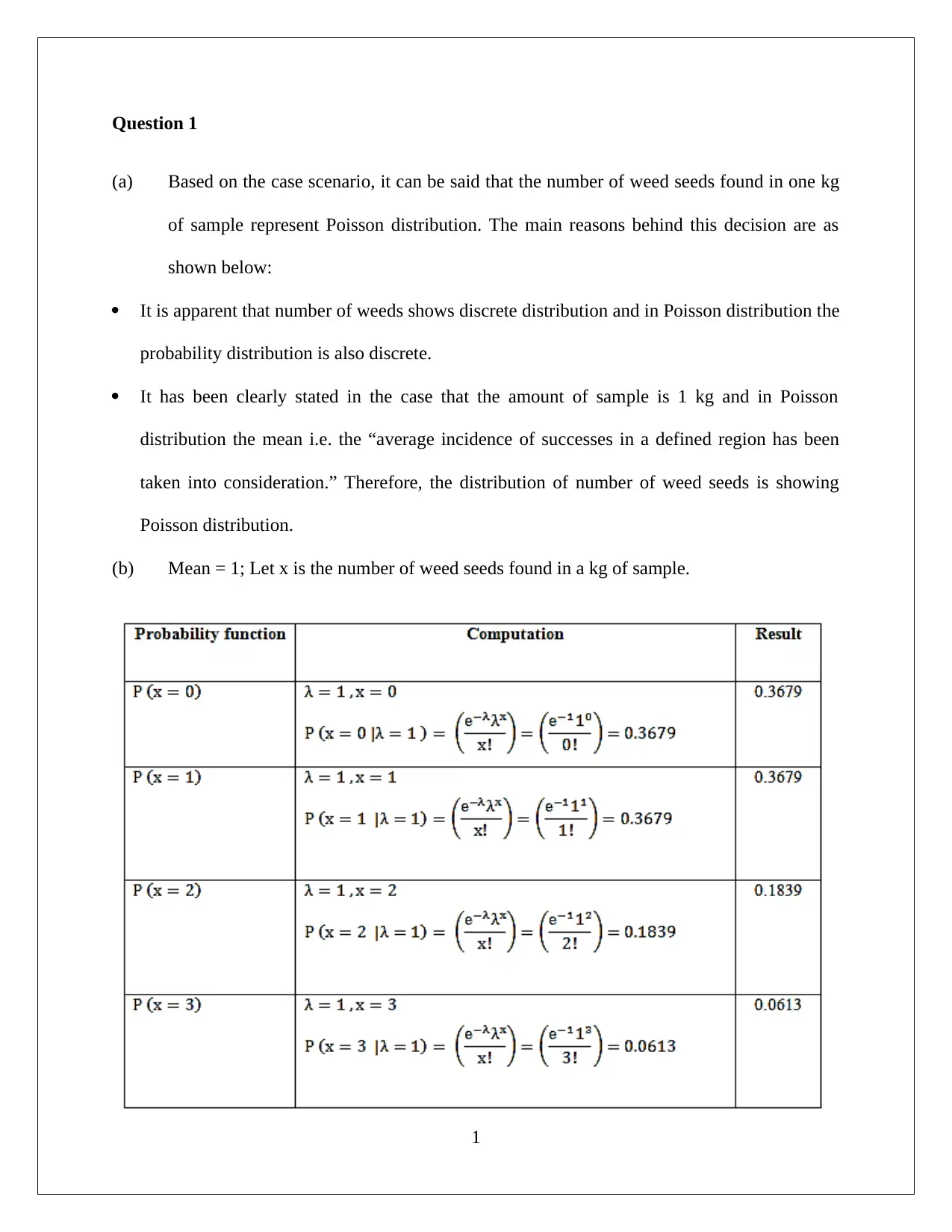
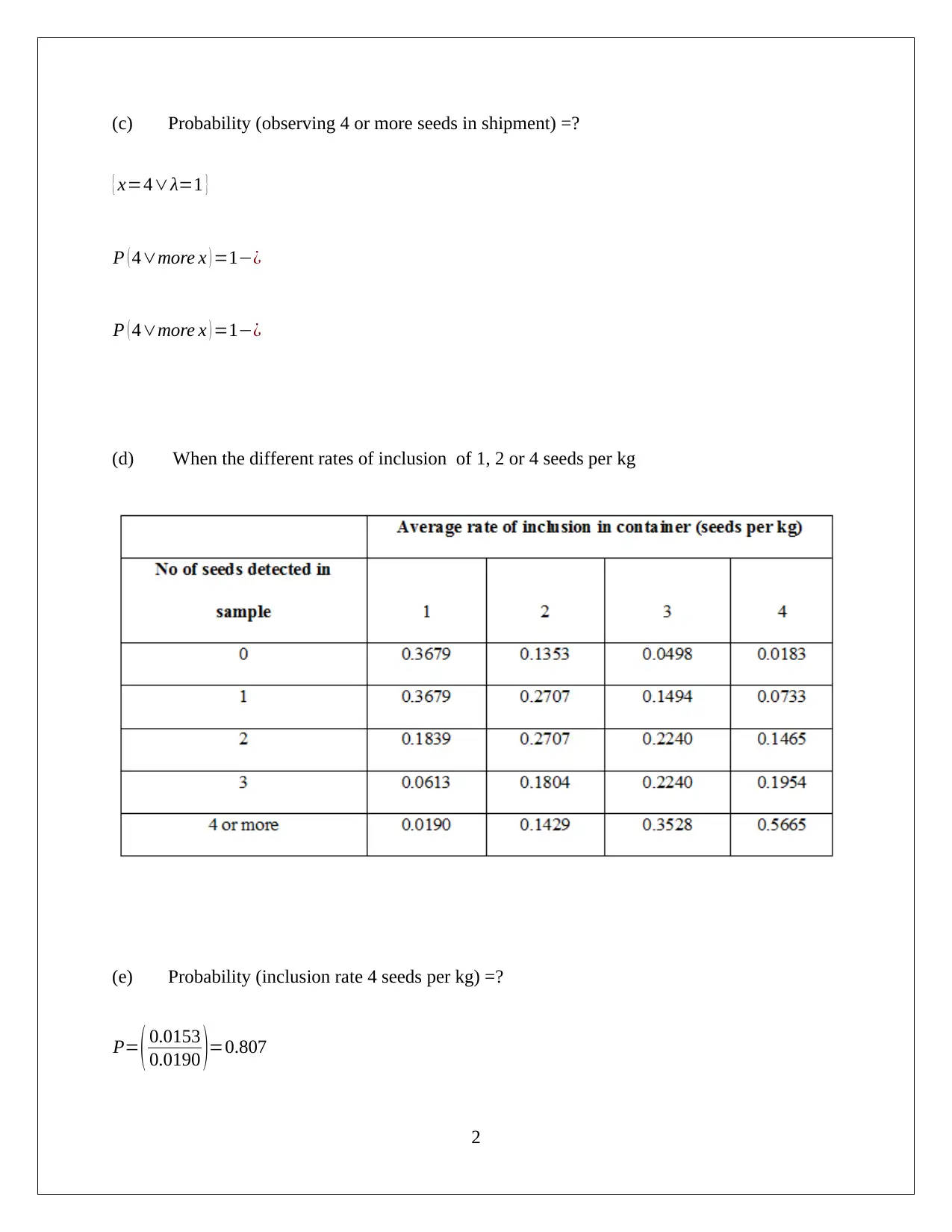

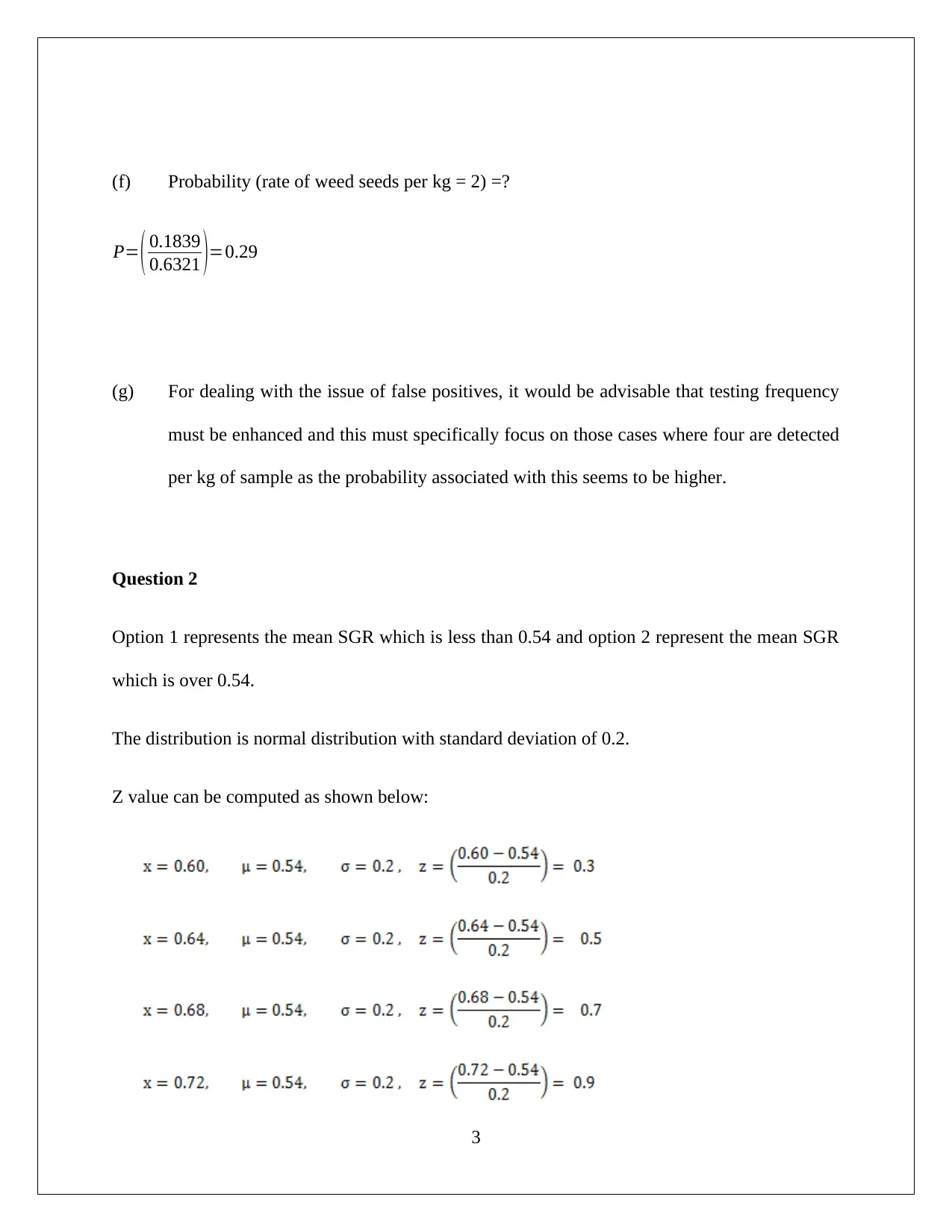
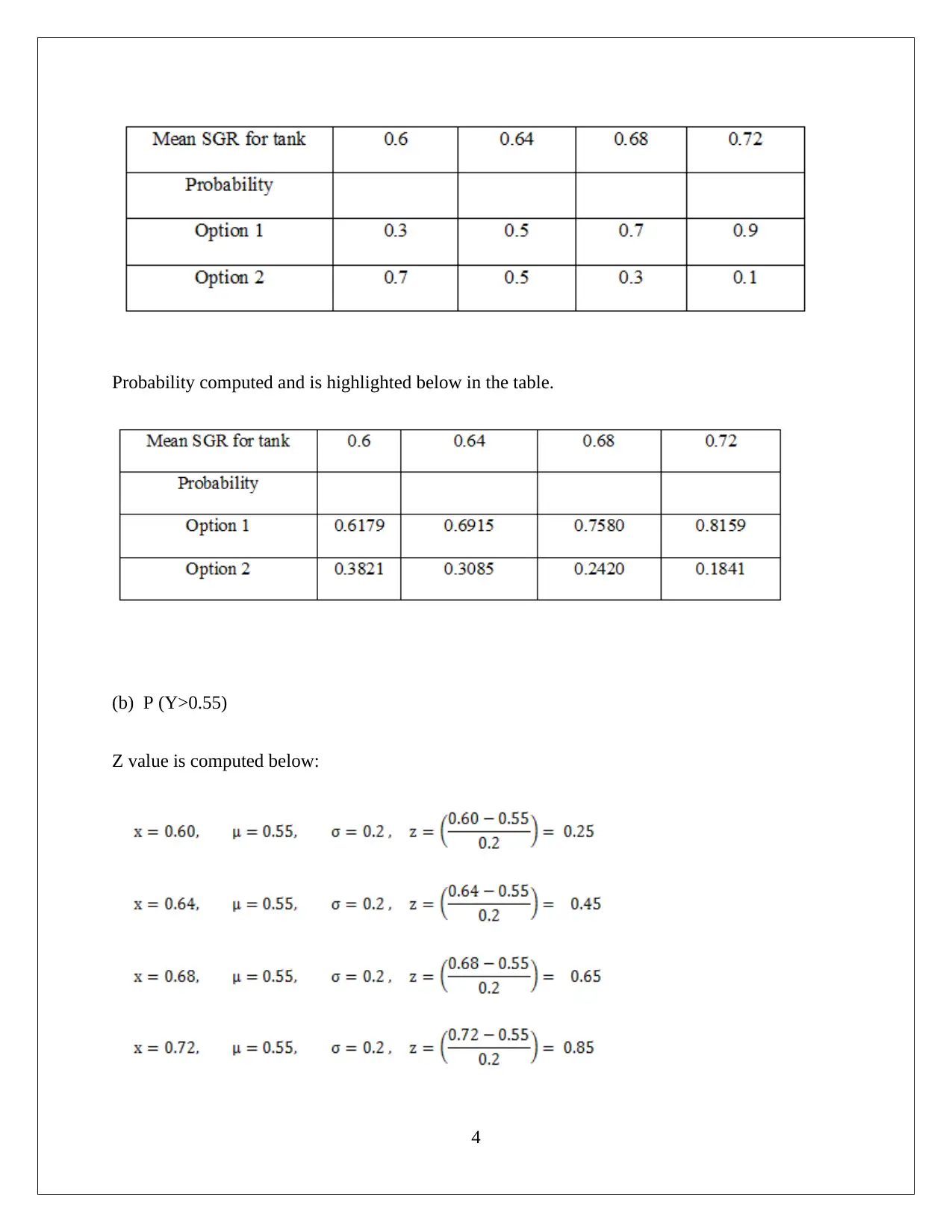
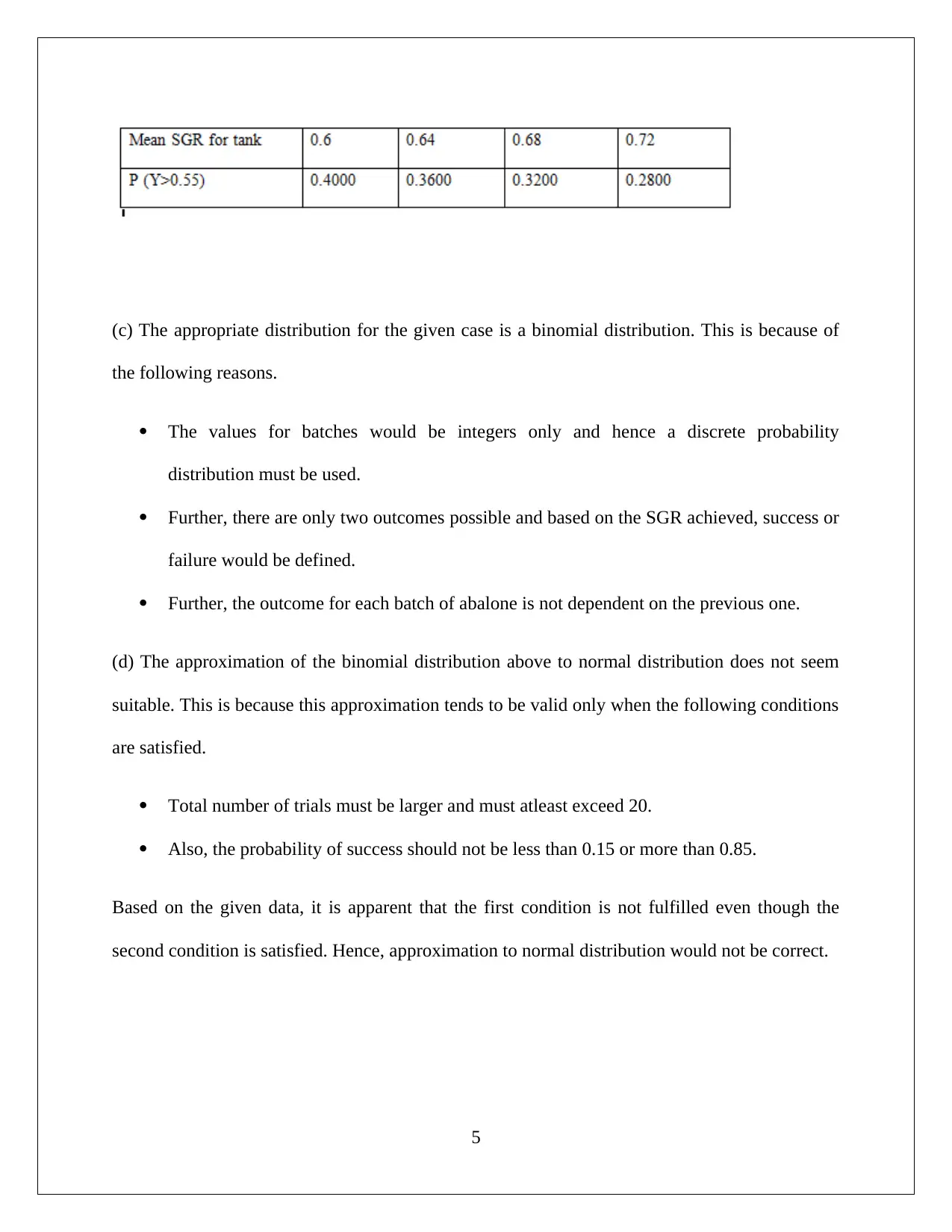
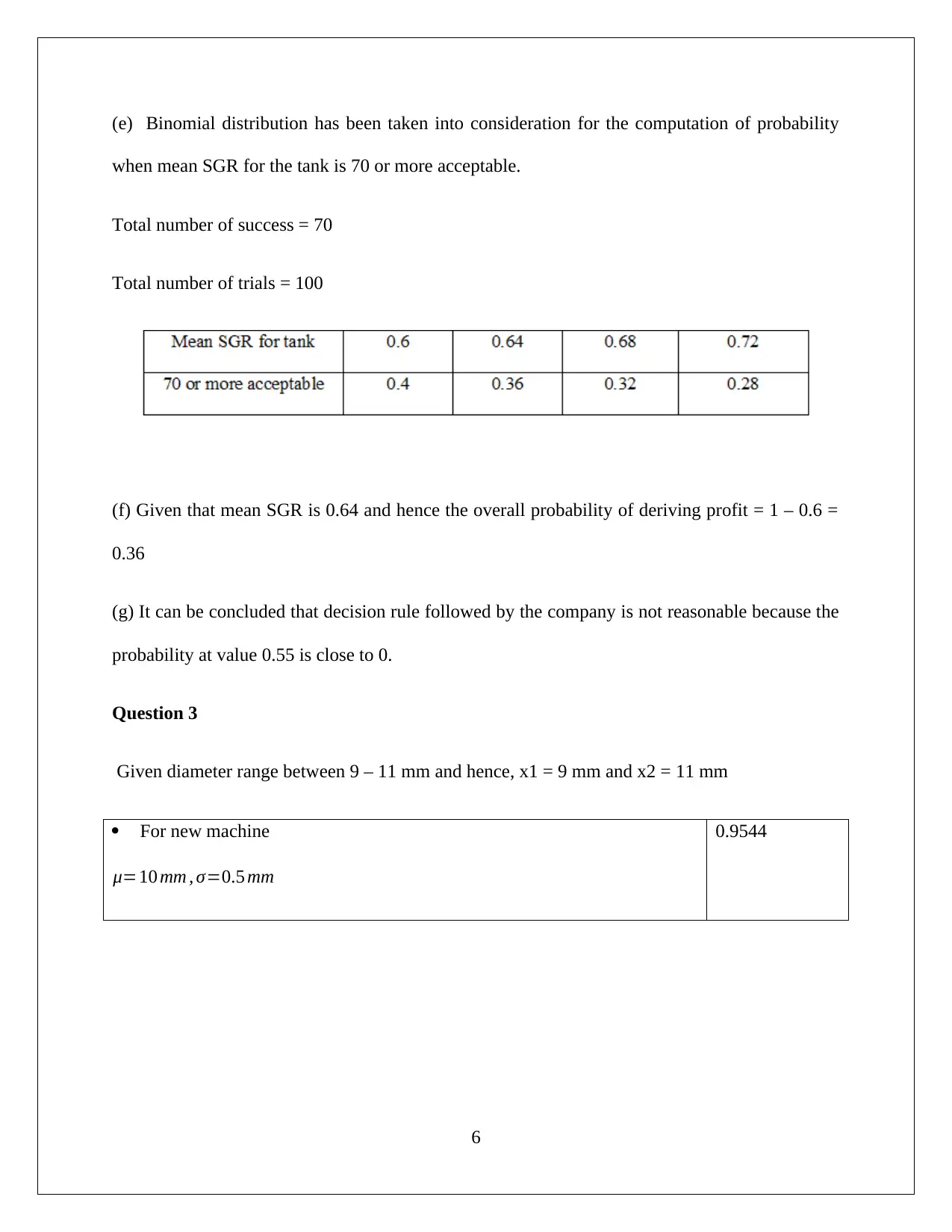
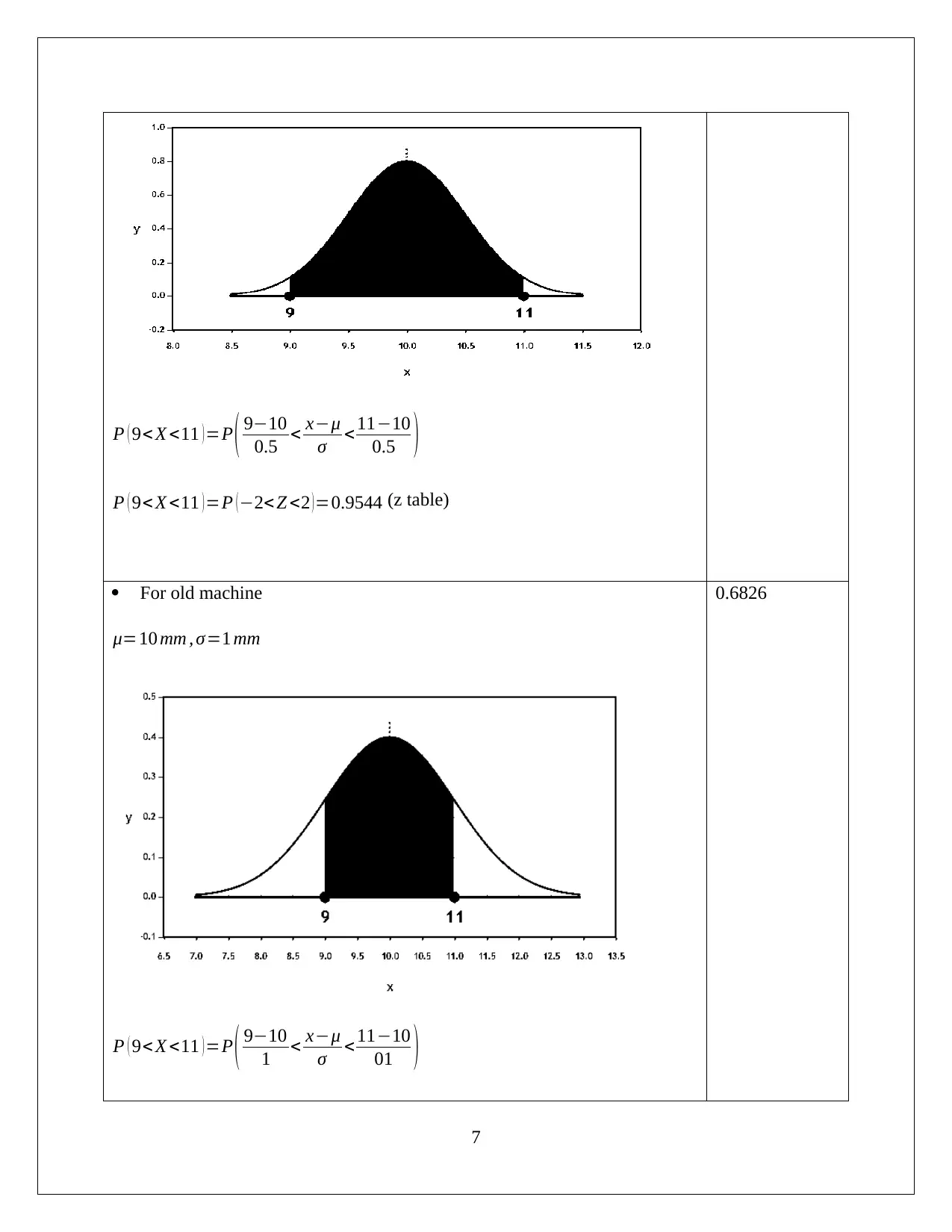
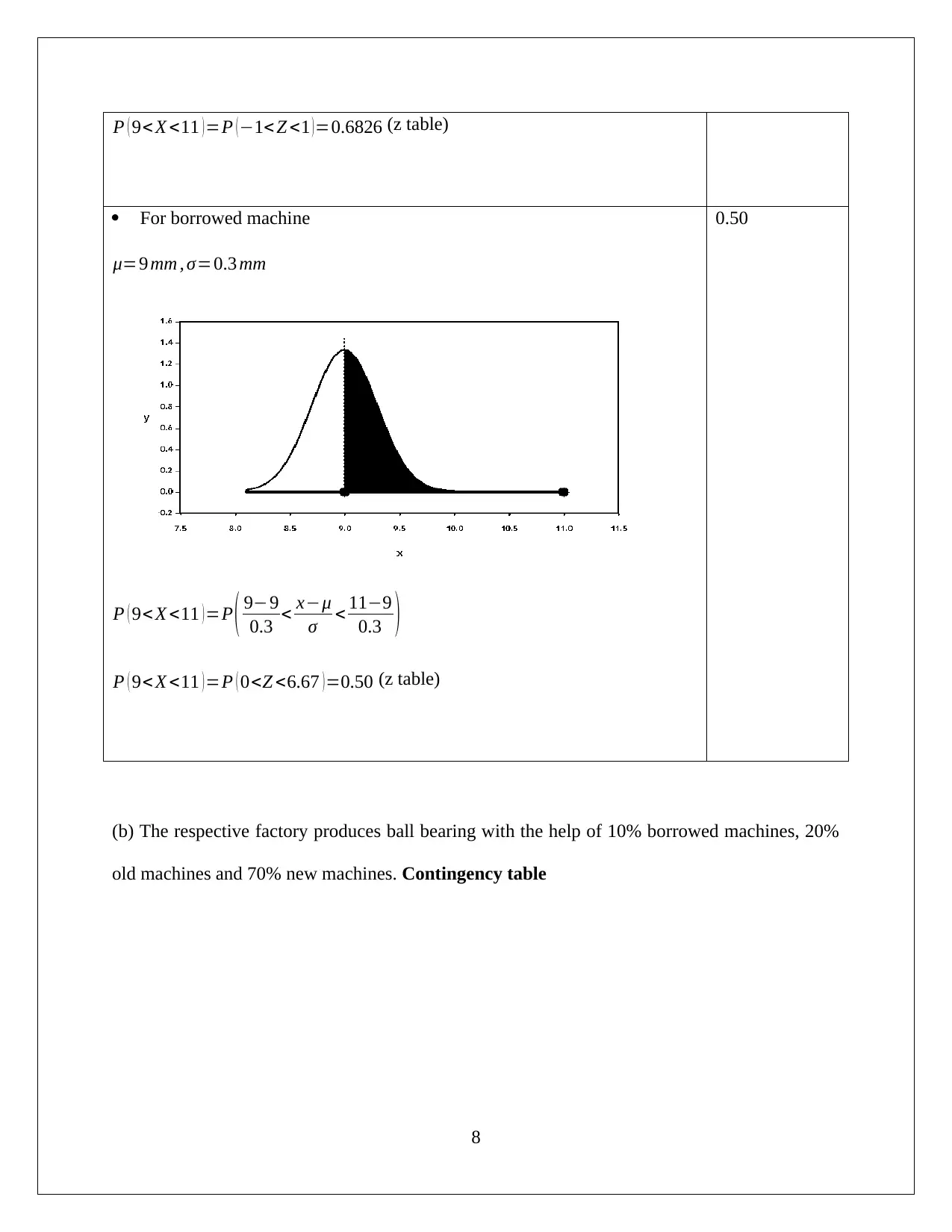
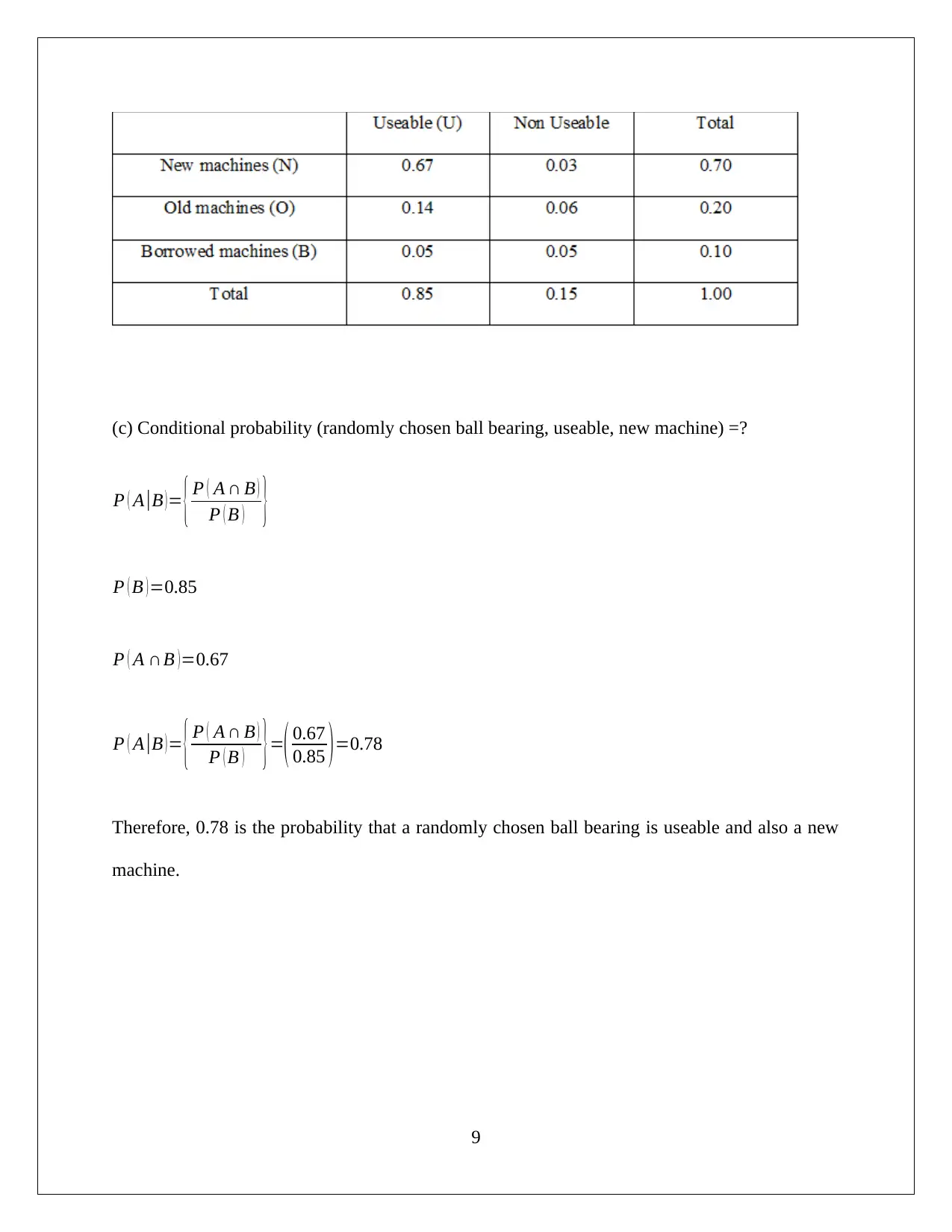






![[object Object]](/_next/static/media/star-bottom.7253800d.svg)